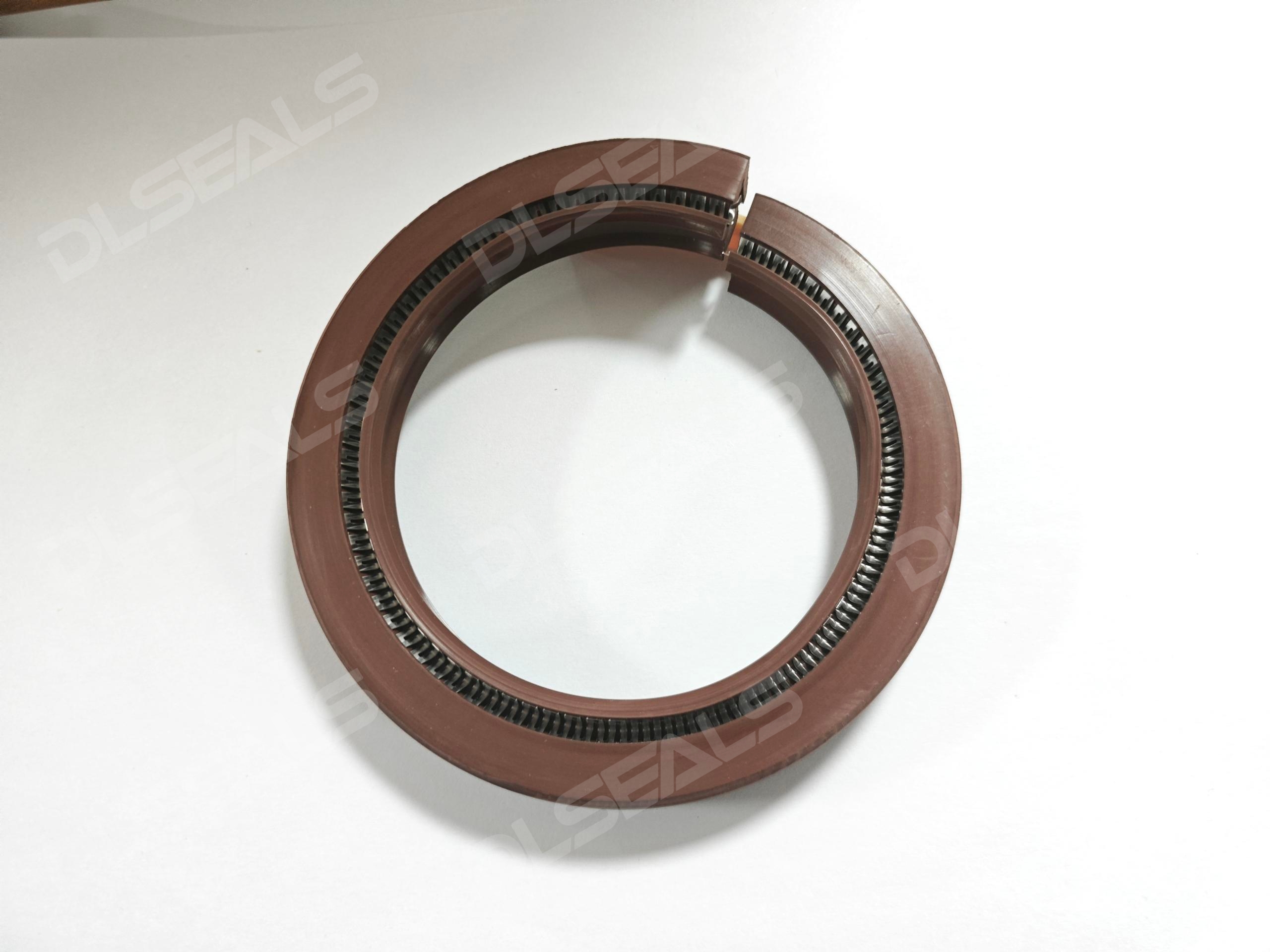In the world of equipment maintenance, few phrases make engineers and technicians frown more than “oil seal replacement required.” Disassembling bearing housings, moving motors, or removing entire drive shafts—these operations consume immense labor hours and cause costly downtime. Split oil seals (or split seals) are quietly revolutionizing traditional maintenance logic, emerging as the smart choice for industrial equipment upkeep.
Core Advantages: Making Seal Replacement Less Invasive
- Revolutionary Convenience & Efficiency
- No Complete Disassembly: The most valuable advantage. Replacing traditional one-piece seals often requires dismantling bearings or shafts—split seals eliminate this entirely.
- On-Site Installation: Technicians simply align the two halves around the shaft and housing in place.
- Drastic Downtime Reduction: Replacement time shrinks from hours/days to minutes/hours—critical for continuous production and high OEE (Overall Equipment Efficiency).
- Reduced Skill & Labor Intensity: Simplified installation lowers skill requirements and physical strain.
- Significant Cost Savings
- Lower Labor Costs: Drastically reduced working hours.
- Indirect Cost Reduction:
- Prevents Secondary Damage:Avoids risks of damaging adjacent components during complex disassembly.
- No Special Tools/Cranes:Eliminates need for hoists or pullers.
- Enhanced Safety:Reduces hazards from moving heavy parts.
- Lower Opportunity Cost:Minimizes production losses from downtime.
- Reliable Sealing Performance (with Quality Design)
- Proven Lip Technology: Uses standard spring-energized rubber lips identical to solid seals.
- Robust Split Design: Relies on precision engineering:
- Precision-machined interfaces (e.g., interlocking steps/mitres).
- High-strength fasteners (e.g., socket-head bolts) for rigidity.
- Integrated seals (e.g., silicone gaskets/flanged ends) at joints to prevent leakage.
- Performance Parity: Well-designed split seals match solid seals in reliability.
- Broad Adaptability & Flexibility
- Legacy Equipment Solution: The only practical optionfor older machinery (e.g., gearboxes, motors, fans) not designed for easy seal access.
- Space-Constrained Areas: Ideal for confined spaces or mid-shaft locations.
- Wide Size Range: Covers shafts from millimeters to several meters.
- Material Versatility: NBR, FKM, PTFE lips available for oils/temperatures/chemical resistance.
Key Applications
Split seals are the premier solution for:
- Large industrial gearboxes, motors, fans, blowers, pumps.
- Rotary kilns, ball mills, crushers, conveyor rollers.
- Marine propulsion shafts, hydropower units, paper machinery.
- Wind turbine gearboxes (especially nacelle-level maintenance), bearings.
Considerations
- Cost: Unit price may exceed solid seals, but total cost savings(labor + downtime + risk) deliver superior ROI.
- Extreme Conditions: Consult suppliers for ultra-high speed, pressure, or vacuum applications.
- Installation: Critical to follow specifications—clean joints, apply sealant correctly, torque bolts properly.
- Supplier Quality: Choose established brands with proven designs/manufacturing precision.
Post time: Aug-21-2025

